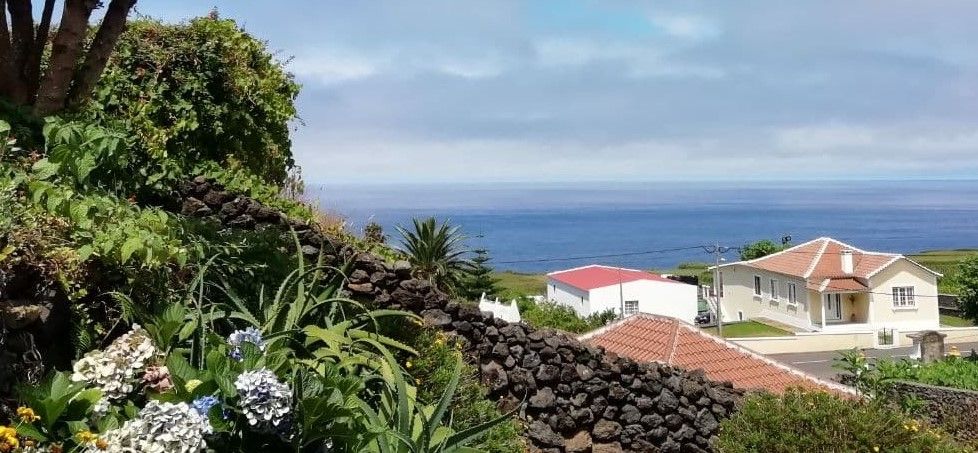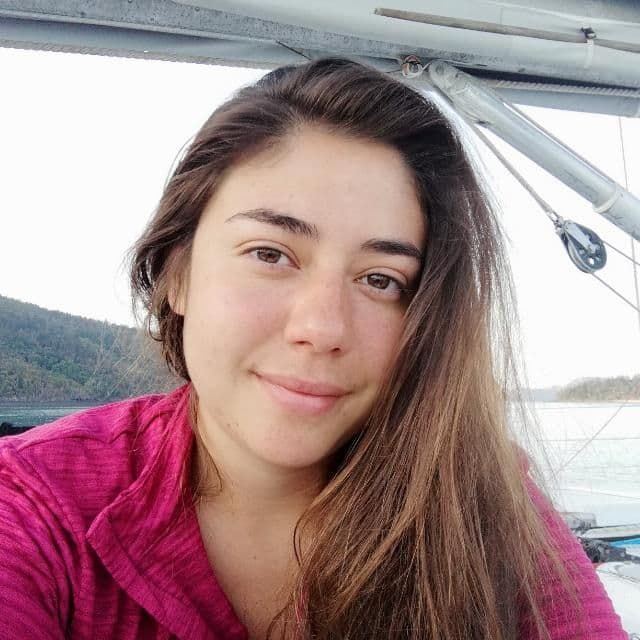Whale Watching
Басылган: 19.08.2021
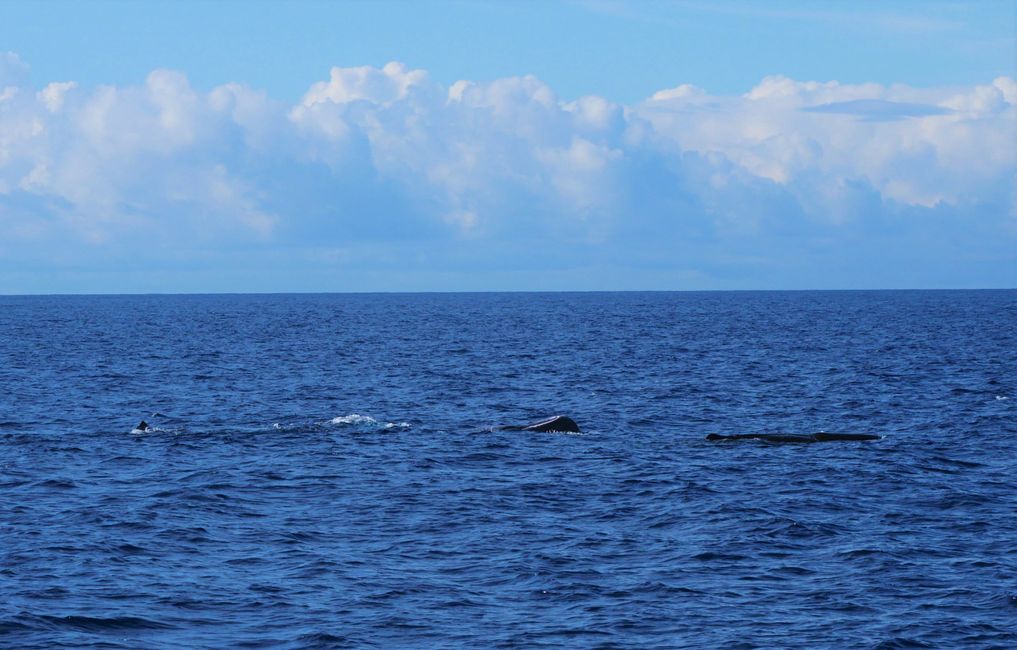
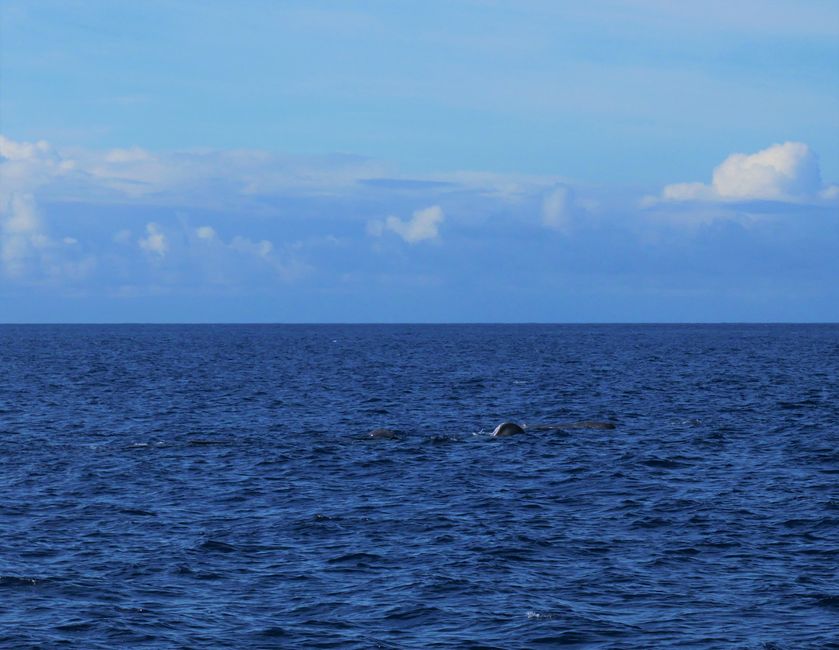
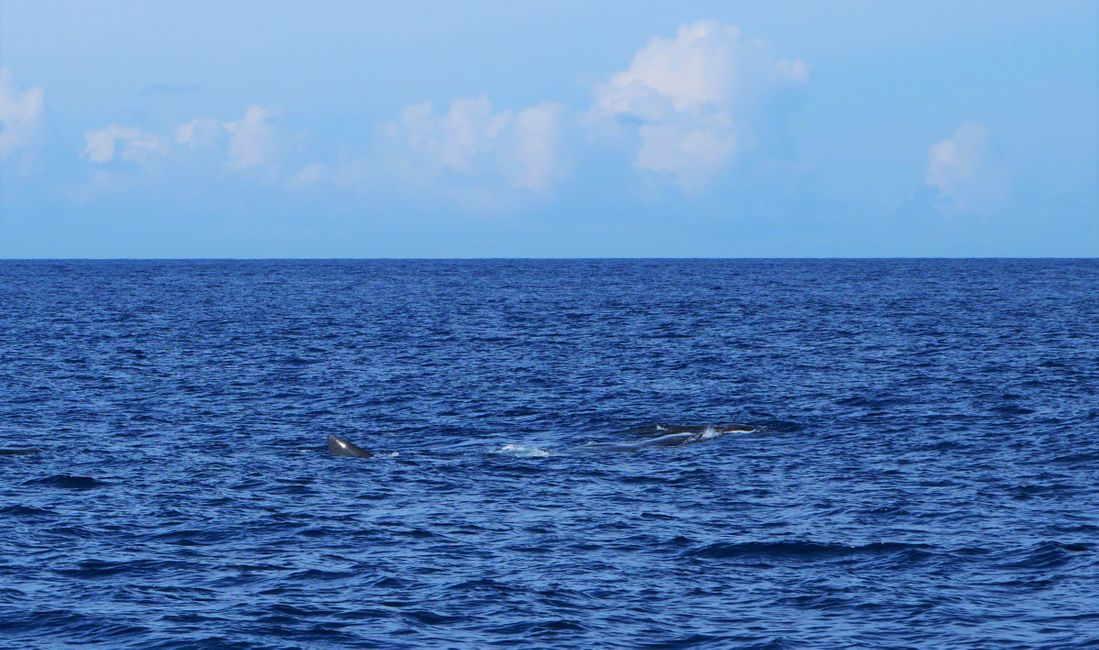
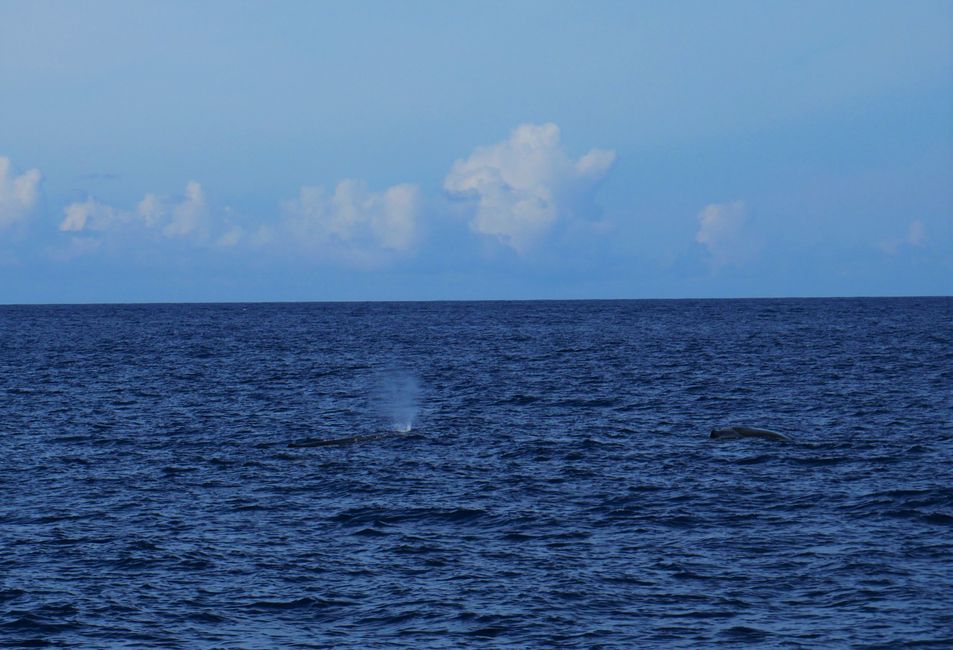
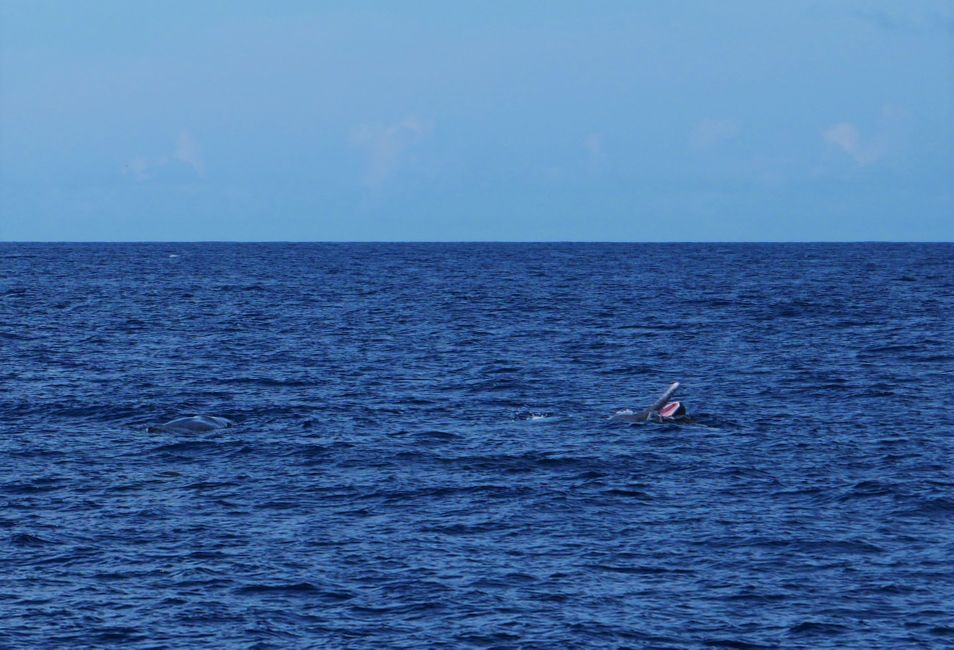
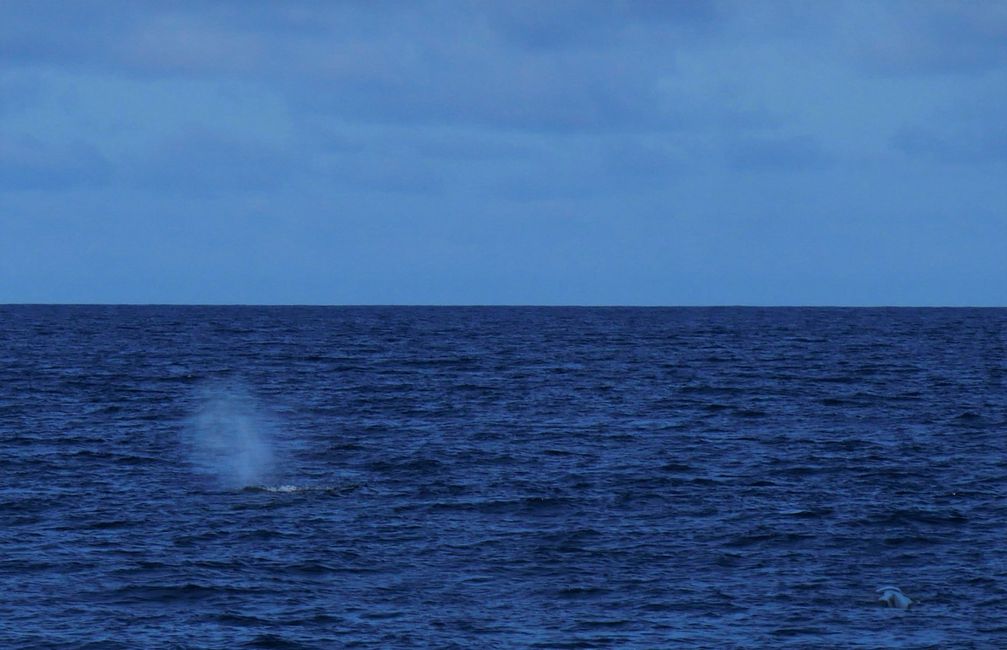
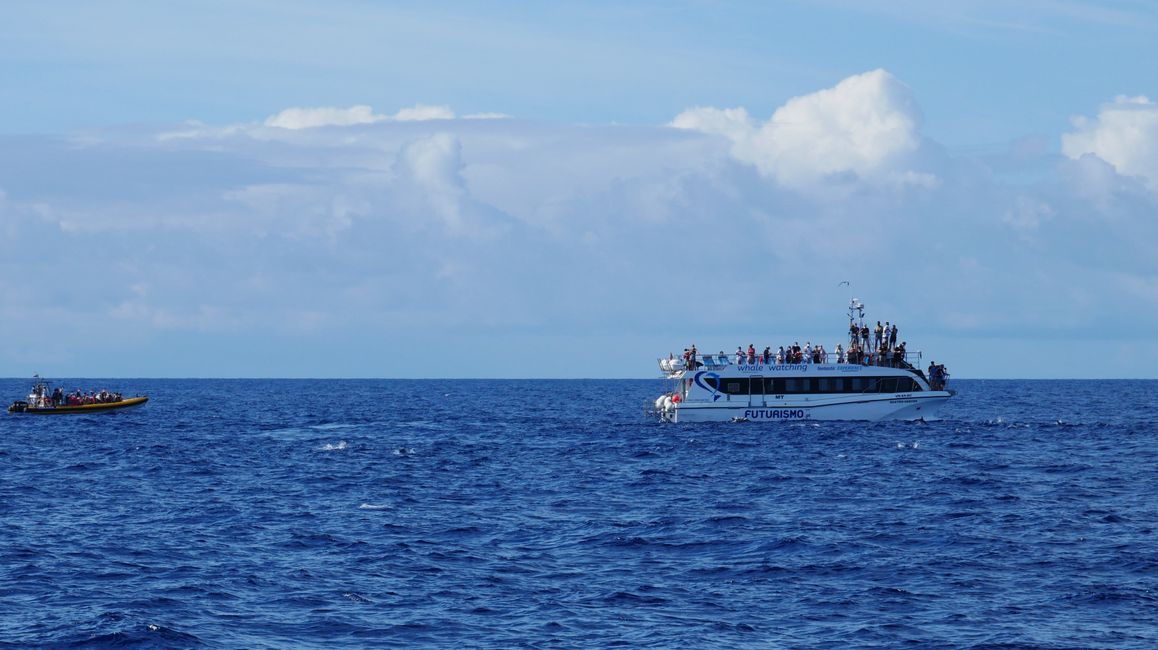
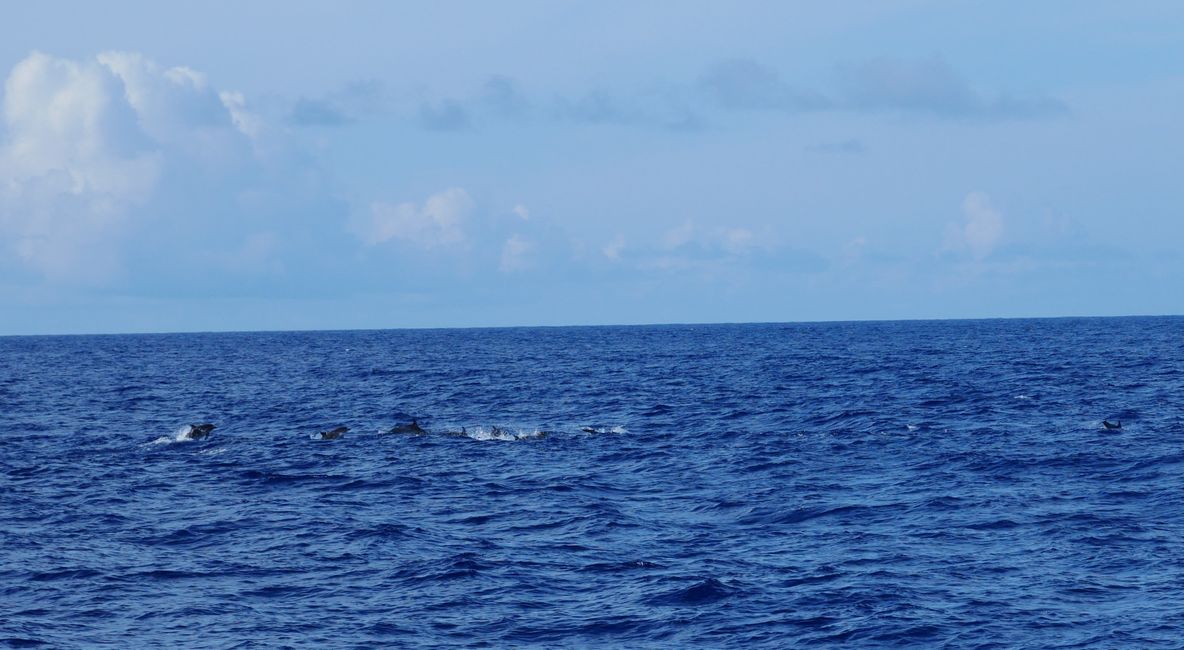
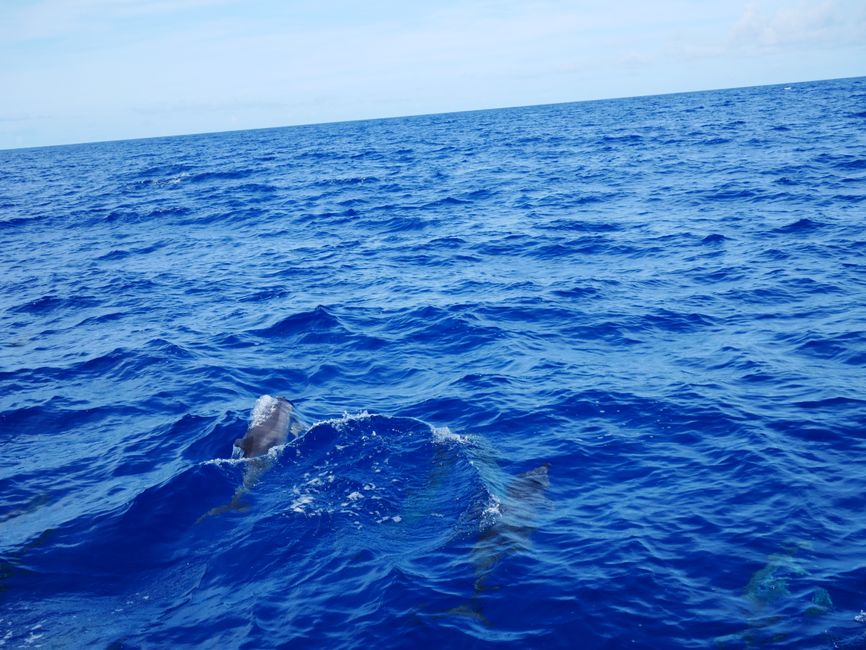
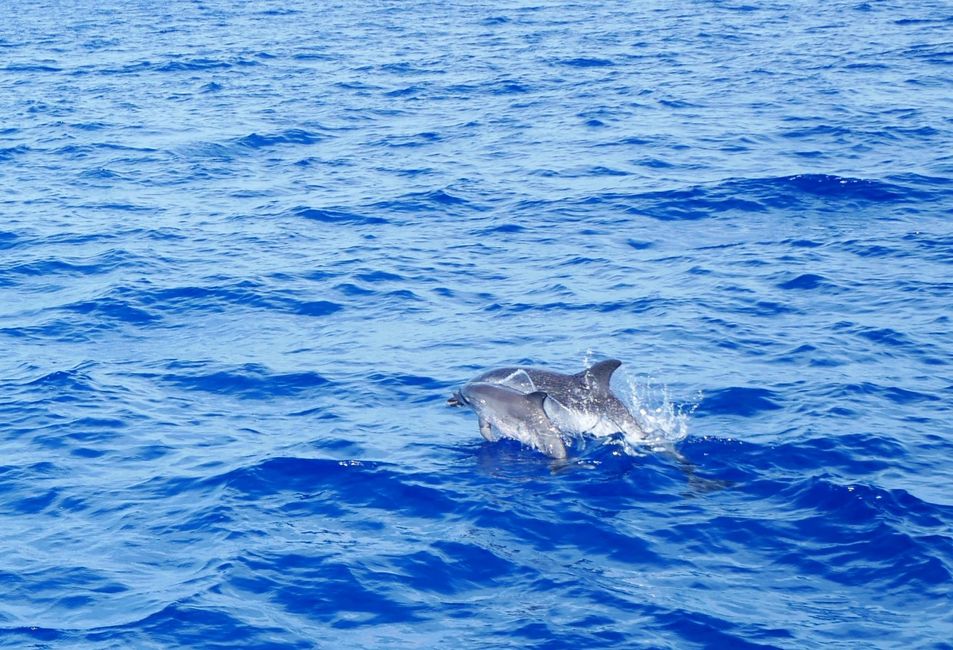
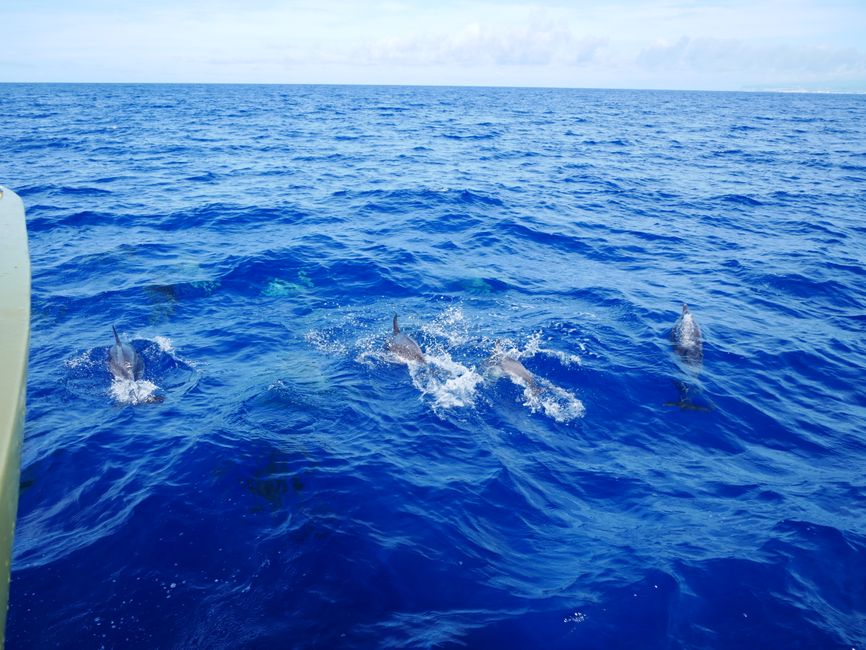
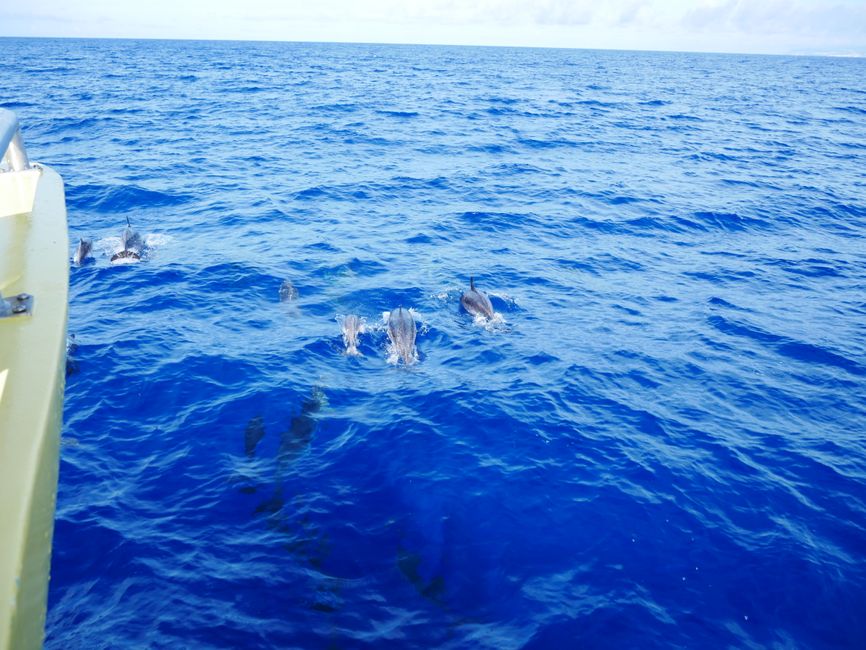
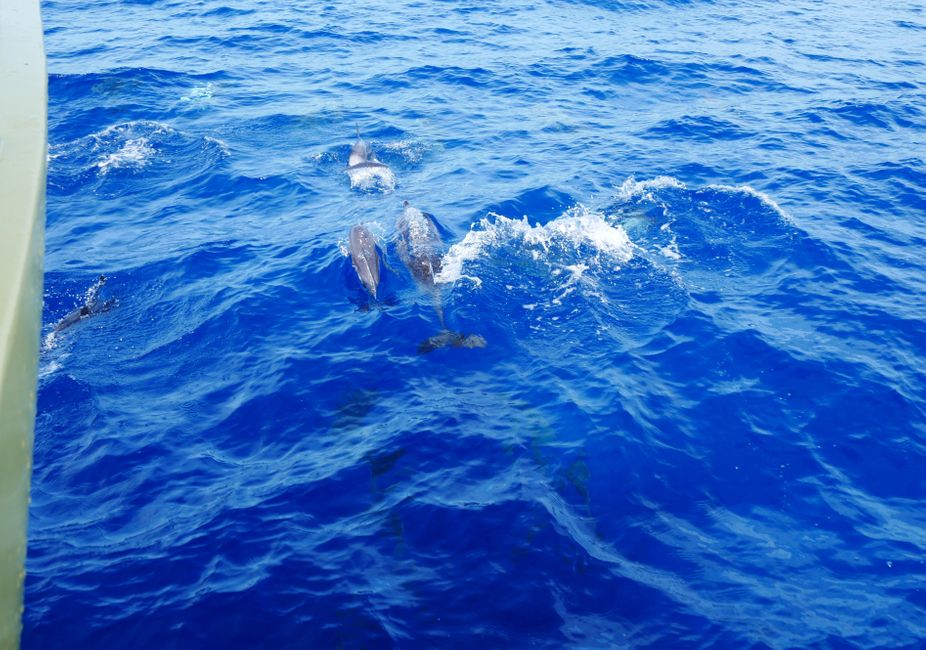
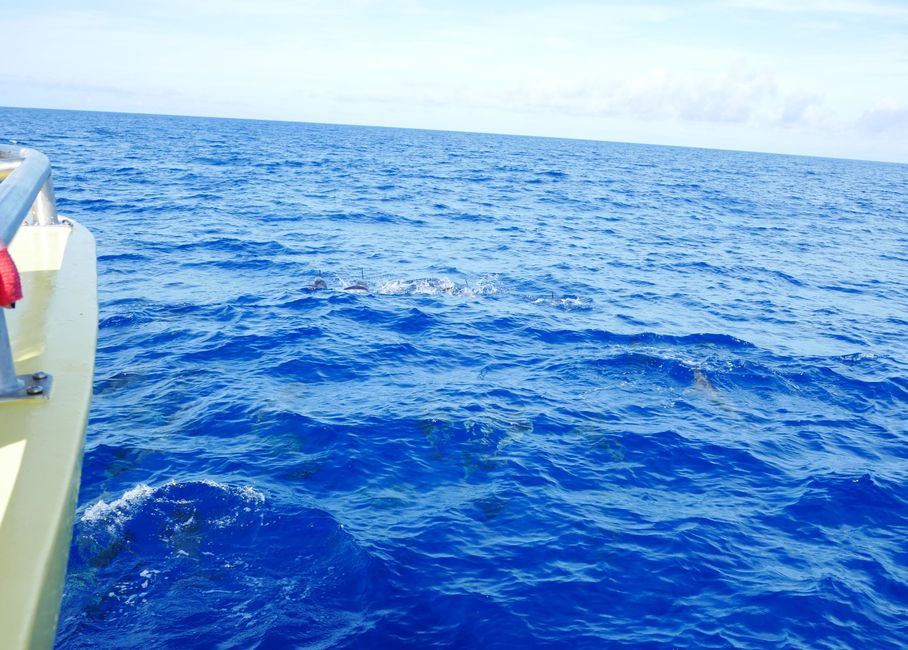
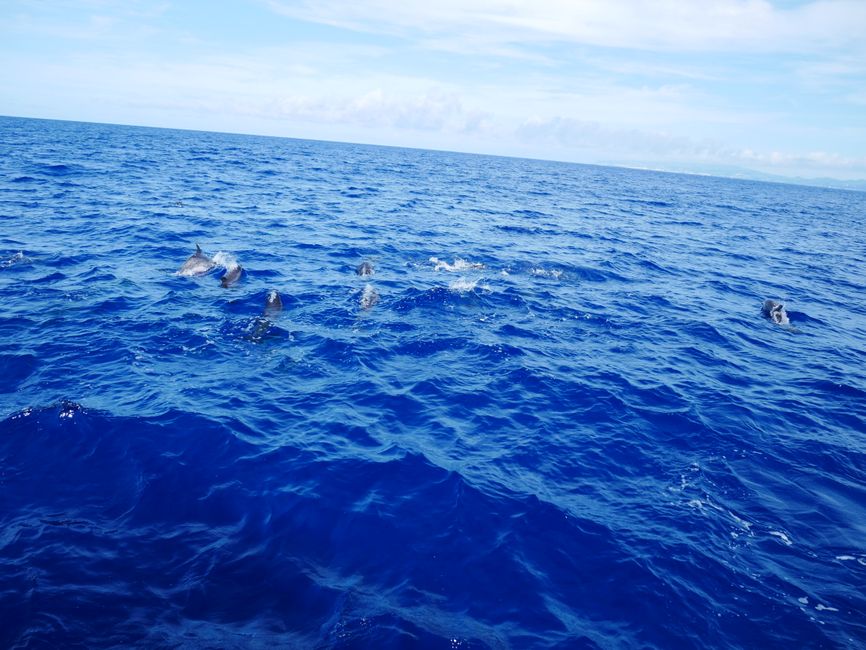
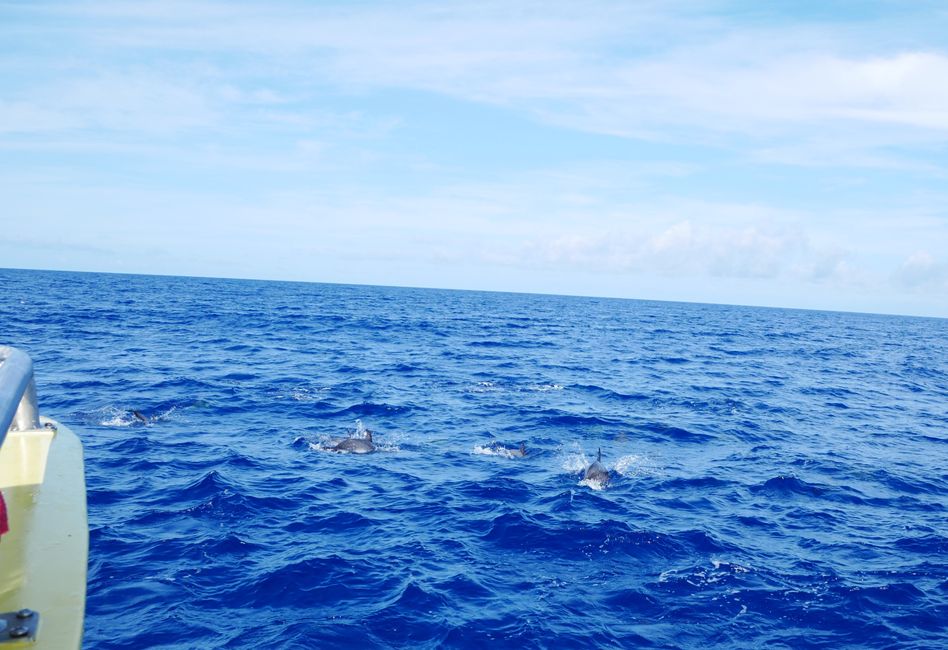
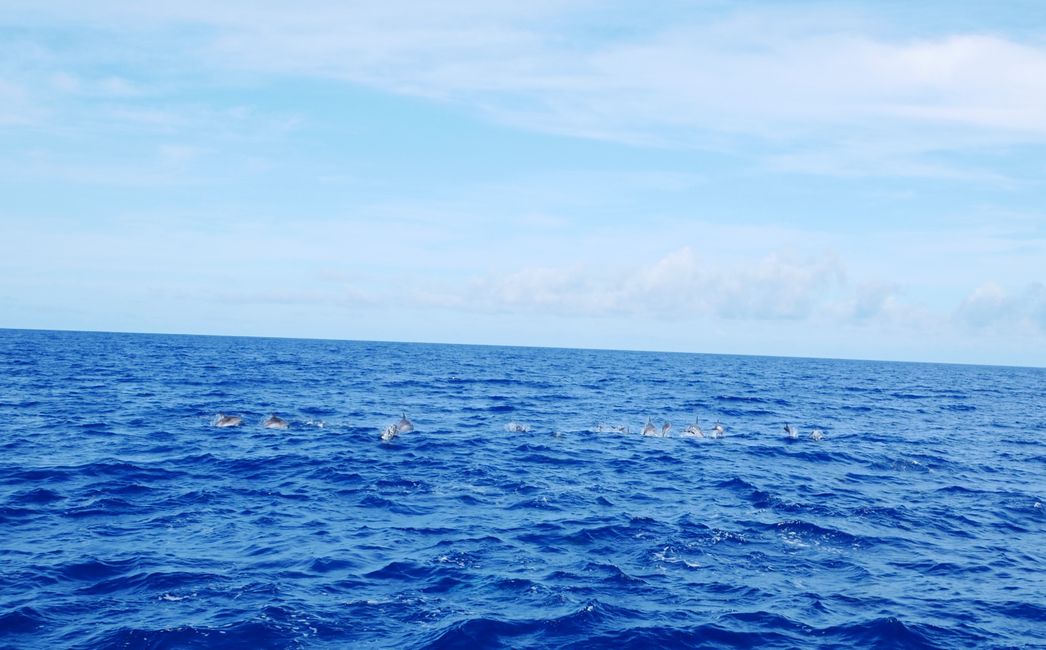
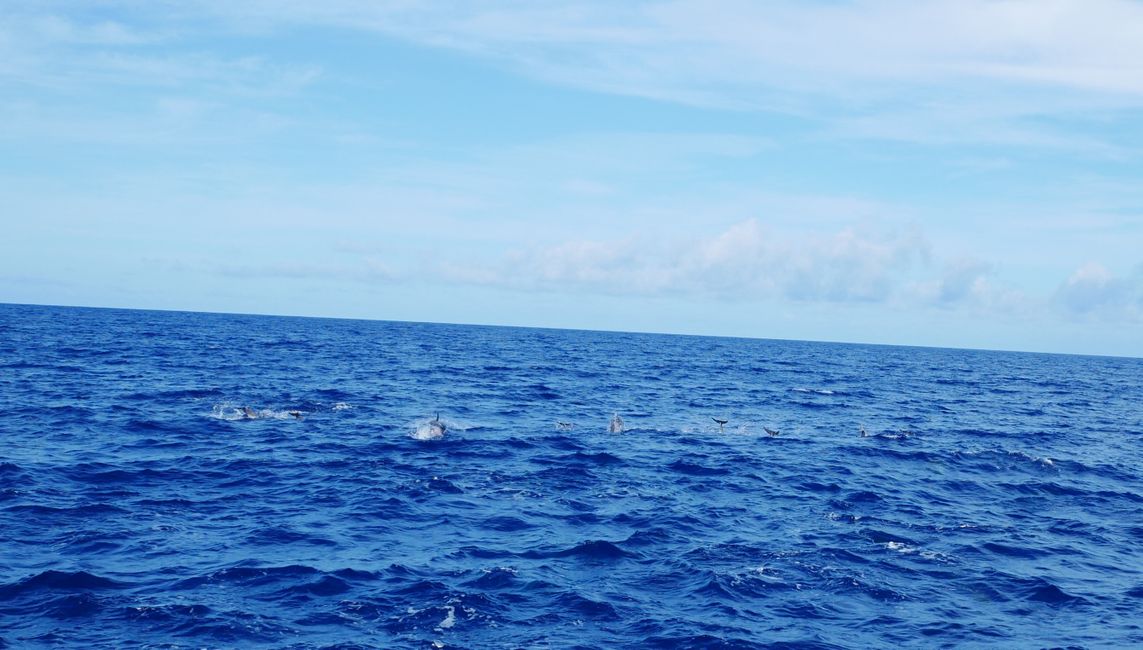
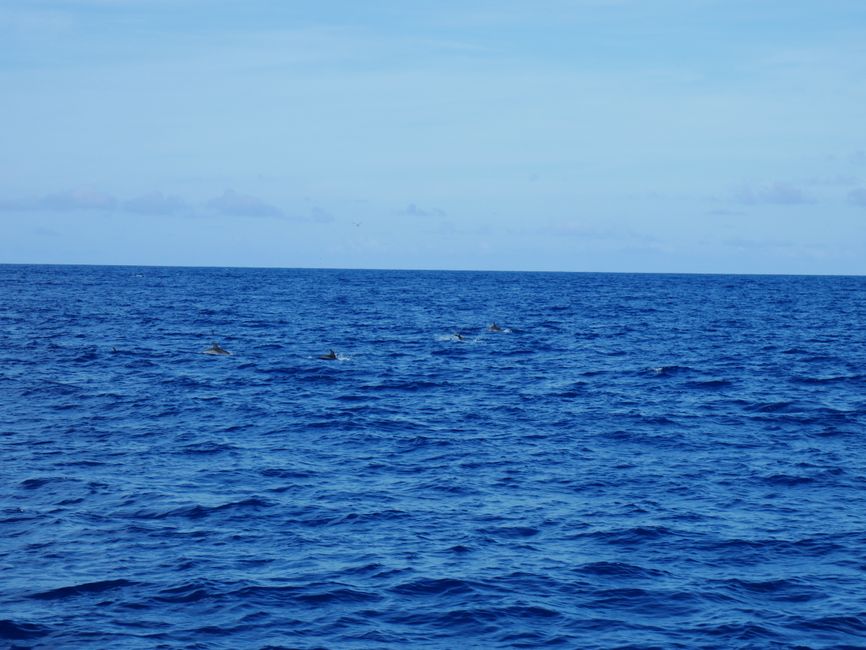
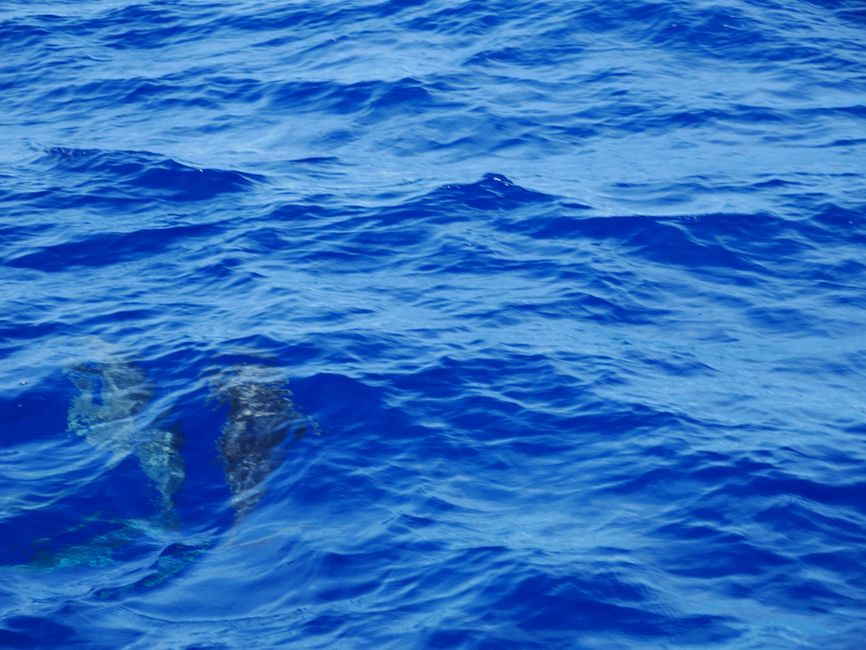
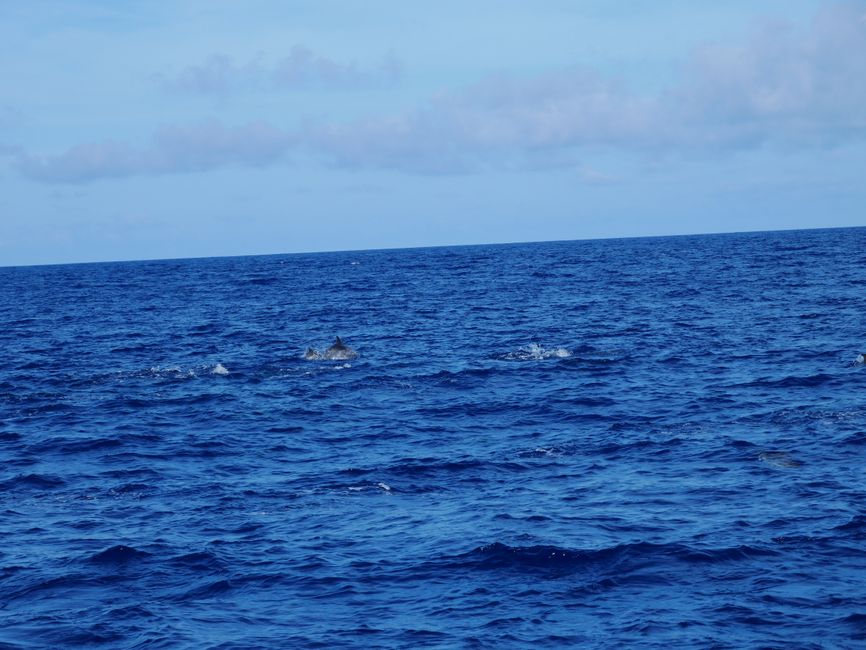
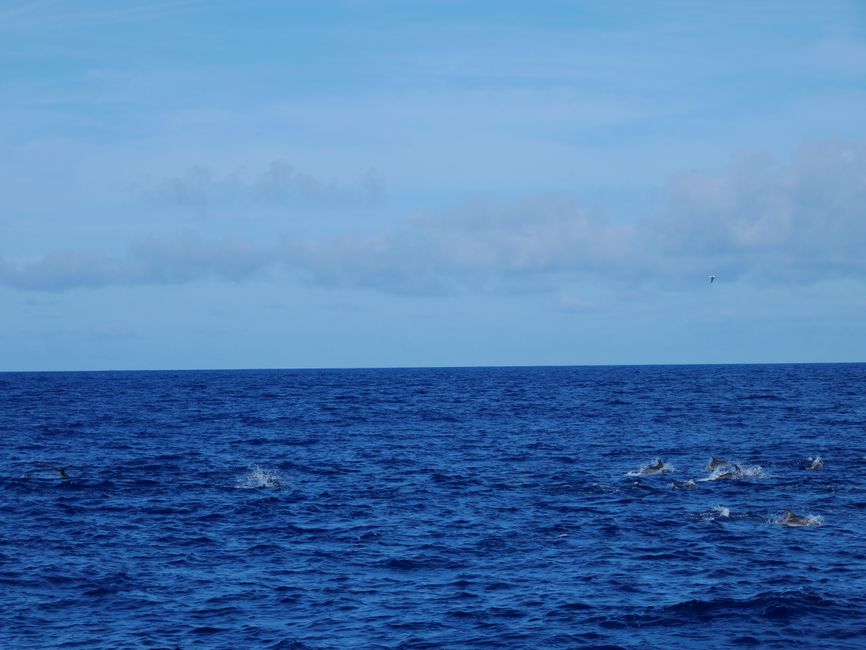
19.08.21
Highlight of the day: Sperm whales and soooo many dolphins!
'Do you have everything? Can we go?'
'Yep, all set, let's go.'
Clara and I are once again running a bit late, but according to Google Maps, we should still arrive at the harbor just before 9 a.m. if we hurry.
'Bye', we shout into the kitchen as the door closes behind us.
It's crazy, we've only been here for four days, but already the way to the harbor feels familiar and we're almost on time. We pay for our trip and I turn around to look at the pier where our catamaran should be waiting.
'Oh!', I let out a slightly disappointed sigh when I see the large yellow motor catamaran and look at Clara. Judging by her expression, she was also expecting a beautiful sailing catamaran, not this behemoth, but oh well.
Laughing at our mistake, we walk along the pier and hop on board. We may be the last ones, but we're not fazed by the slightly grumpy looks from the crew. We head to the upper deck. As the boat begins to sway, we catch the English safety briefing and I can't help but smile.
'If you feel seasick, sit at the back of the boat and look at the horizon. It helps.'
Those are the exact words I used in my safety briefing in Australia. And now I feel the excitement of being out on the ocean again. The sun is shining, the water is deep blue, I can taste the salt in the air, and there's hardly any swell, it's wonderful!
The boat is quite crowded, so Clara and I find a comfortable spot at the front of the boat on the steps, lather sunscreen on our exposed skin, and put on our sunglasses. We don't want to make the same mistake twice. Or to use Clara's words, getting sunburned twice would be simply stupid. (We definitely don't want that.) Here and there, we catch bits of German, a Swiss accent, and French. Yes, the world is small, and Germans love to travel.
The wind is strong and doesn't allow for much conversation, but I'm perfectly content watching the water and hoping to see whales when a few boats appear in the distance ahead of us.
'Up ahead, you can see the spout of a sperm whale,' comes through the speakers.
Indeed, in the distance, you can see a small vertical cloud of water vapor. I get a surge of excitement. Sperm whales!!!
And then I see another spout, and another one! I've never seen a whale spout before, and I have to admit, I had a tiny image of a water fountain in my head, like the ones you see in children's books. Of course, that's nonsense, the spout is just the whale exhaling at the surface of the water, and since when do mammals breathe out water? But oh well, fantasies tend to linger in the mind, and that's actually quite nice. But you really do see a small cloud of water droplets rising, seawater from the surface, but also just the moisture from the whale's breath. And suddenly, it hits me how large the lungs of this creature must be if I can still see its breath from this distance.
Our catamaran slows down, and we approach the group of sperm whales in the water ahead of us. I'm slightly taken aback by the number of boats already here. There are two larger ones and three smaller ones, forming a neat semicircle around the whales, keeping a safe distance and not disturbing them, at least they don't seem to be changing their behavior from what I can observe. It feels a bit strange, but as odd as it sounds, ultimately, it's tourism that protects these animals and supports the people who used to make a living from whaling. Those thoughts briefly flash through my mind as we approach the group, but as soon as I see the gray bodies rising like small hills from the water's surface, there's no room in my mind for anything else.
Gray, three backs arching out of the water. Two more can be seen by their spouts. In front of us, we see five sperm whales resting at the surface. Three adult females with two calves. They twist and move in the water. One swims on its back, showing us its lighter belly. Then there's a stir among the passengers. A female sperm whale sticks her head out of the water slightly, showing us her jaw with the sharp white teeth. Then we only see five gray balls at the surface. Sperm whales like to rest in a vertical position in the water, forming a circle, with only their heads sticking out a little.
It's really incredibly cool to see these giant creatures, even if, if I'm being completely honest, we only see a small portion of them most of the time. Usually, only about 10% of their body size is visible above the water's surface. But considering their enormous size, that's actually quite a lot. Sperm whales are the largest predators in the world, with females reaching lengths of 12 meters and weighing 15 tons (at least according to Wikipedia). They dive up to 3000 meters deep while hunting and can hold their breath for up to 45 minutes (not according to Wikipedia, but according to the marine biologist on board). However, we still know very little about these fascinating creatures that we once pushed to the brink of extinction.
Sperm whales can be found here in the Azores year-round. The females stay here with their young because they find optimal conditions. The seafloor drops off sharply near the coast due to the volcanic origin of the islands, making it perfect for hunting, while the young are relatively protected near the surface due to the proximity to the coast.
After 45 minutes, we say goodbye to the group. Whale watching companies here have strict regulations to minimize disturbance to the animals. Of course, it's difficult to enforce, but it seems to be working, so we set out to see what else the ocean has in store for us.
'Wow! Do you see that?!'
'Dolphins!'
Clara and I smile at each other. In front of us, we see another boat, and between them and us, a large school of dolphins is racing towards us. They jump out of the water, their sleek bodies shining in the sun. And suddenly, they're here. Everywhere! Left, right, in front, just everywhere. We stand up and go to the railing. I estimate the group to be at least 100 animals, maybe more. They dart beside us like lightning. In the crystal-clear water, you can see them below the surface, interrupted by many jumps. It seems to bring them joy to swim in front of the boat and then elegantly turn outward and jump out of the water again. We see many adults, but also many juveniles. The baby dolphins swim close to their mothers and jump together, like the world's most perfect synchronized swimmers, out of the water and dive back in gracefully. It's incredible how beautiful they are!
These are Atlantic spotted dolphins (Stenella frontalis), known as 'Atlantische Fleckendelfine' in German. They are a migratory dolphin species found around the Azores only in the summer. These incredibly fast swimmers prefer warm waters and travel in large schools of up to 200 animals across the Atlantic. The calves are gray and develop their characteristic spots as they grow older. The more speckled their bodies, the older the individual. By the way, our group is not particularly large. Schools of up to 500 animals have been spotted here in the Azores, which is something very special as such behavior has only been observed here.
It's really just incredibly cool! There's only one thing that slightly spoils the moment, and that's the number of boats. Especially one fast, nimble speedboat with swimmers. Swimming with the dolphins here seems rushed and stressed. Quickly to the dolphins, quickly back in, and then starting from the beginning again.
Clara and I look at each other. On Terceira, everything was much calmer, but now we feel somewhat uncomfortable swimming with the dolphins. But what's happening here can't be compared to that. When we were out there, it was only one boat, with a group that meticulously observed the behavior of the animals and left them in peace when they changed their behavior. Apparently, the pressure from the many tourists here is significantly greater than on other islands, which is not surprising considering their size. I vaguely remember a paper I read about tourism in the Azores and dolphin behavior. Briefly, images of dolphin slaughters in Japan flash through my mind, and I look at the three dolphins again, who seem to derive great joy from swimming in front of the boat. Clearly visible under the gleaming surface are the many small spots on their smooth skin. Who would do such a thing? (Further comments on this will follow once I have had the chance to further educate myself on the topic.)
But here on the boat, in the ocean, amidst a huge group of dolphins, it's impossible to dwell on sadness for long. I simply have to laugh and be happy when I see them gliding through the water next to us. So I enjoy the moment for as long as it lasts. Because soon, it's time for us to say goodbye to the group of beautiful and truly interactive spotted dolphins. The boat turns away, and we watch for a little while longer as the jumping dolphins disappear into the distance.
Clara and I barely have time to exchange thoughts about this encounter when tail fins emerge from the water again. This time, much larger, sharply curved, and pointed.
'Here you see something very special, Risso's dolphins! An endemic, but also very elusive species! We're lucky to see them, it doesn't happen every day!' echoes through the speakers.
Clara and I grin and give each other a knowing look, we know them!
It's fascinating how completely different the behavior of different dolphin species is. The Risso's dolphins, or 'round-headed dolphins' (Grampus griseus), don't jump out of the water. At least not as much as the spotted dolphins. They glide through the water much more slowly and only occasionally show us their large, powerful bodies, which are partially striped and spotted, but they always keep their distance from the boat. Born completely gray, their skin turns white and forms beautiful patterns over the course of their lives. Compared to the spotted dolphins, the Risso's dolphins are much larger, reaching lengths of up to four meters and having a significantly more robust physique. They also live in much smaller groups; this group seems to consist of about 15 individuals. But they also seem to enjoy swimming in front of the boat. And so, we get to see three of them up close as they swim in front of the boat and even jump out of the water from time to time. Two heavily spotted adults and a smaller gray-shining juvenile.
With one final flick of their fins, they bid us farewell and dive beneath the surface. Until next time, dear ones.
P.S. It's damn hard to photograph whales and dolphins, I realize that now. And I probably don't have the right lens with me either, but practice makes perfect, right?
.Авап
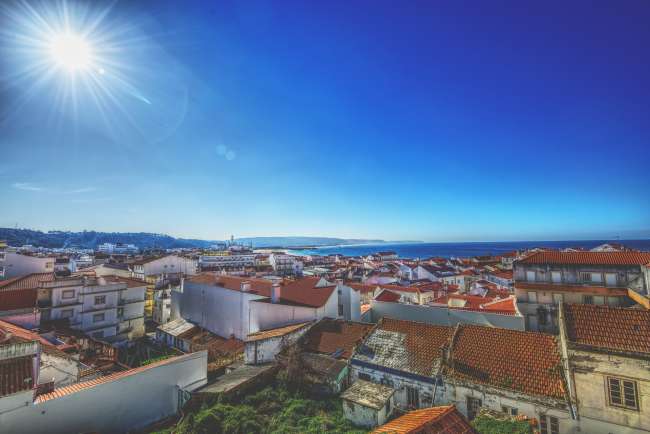
Сәяхәт отчетлары Португалия
